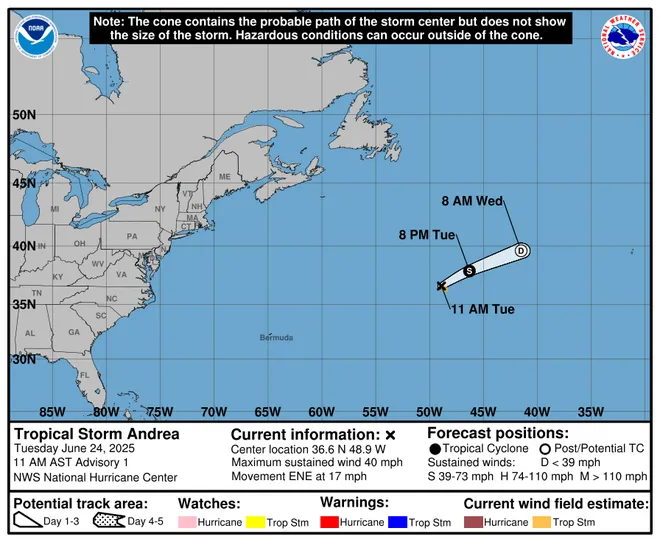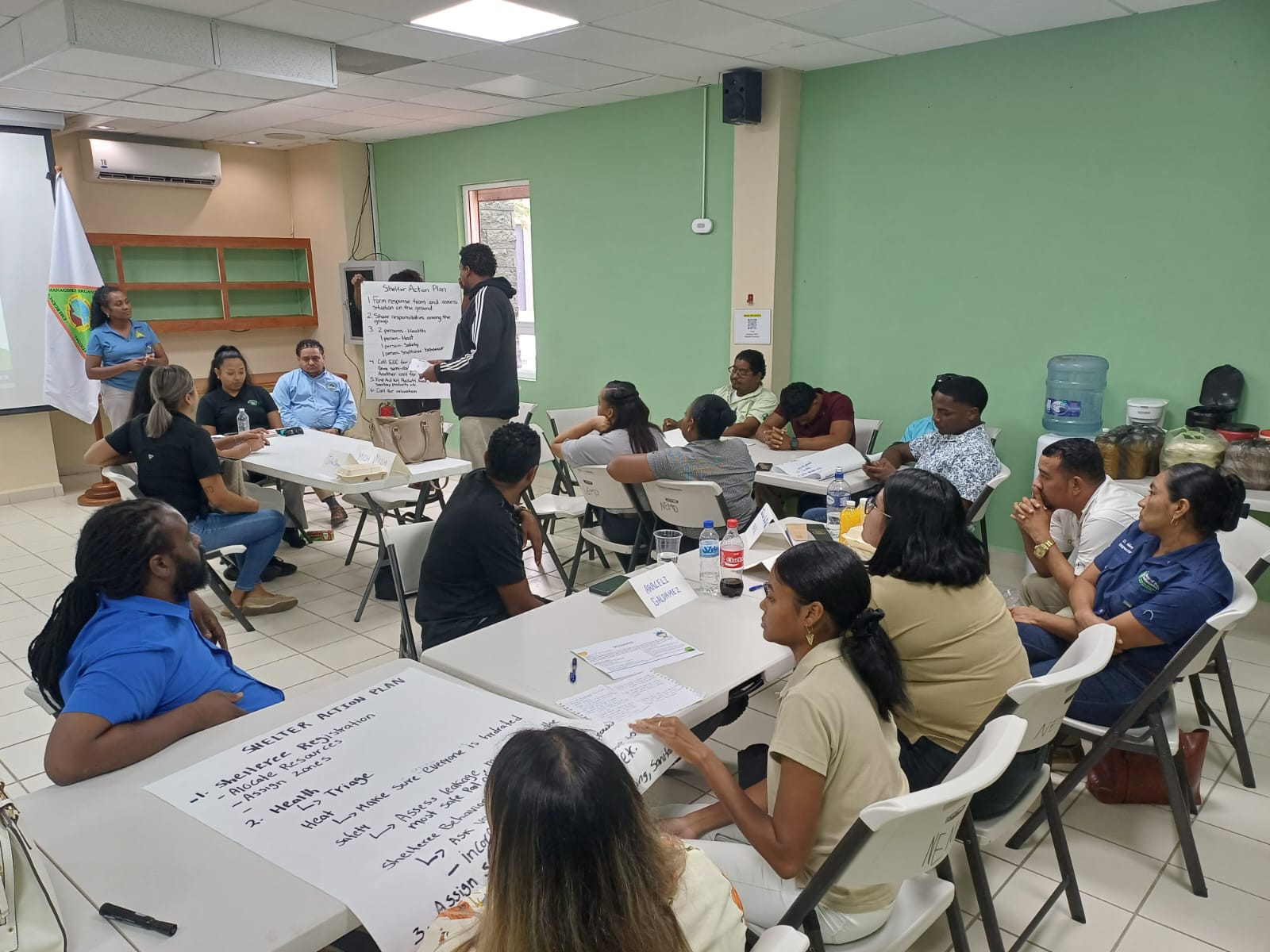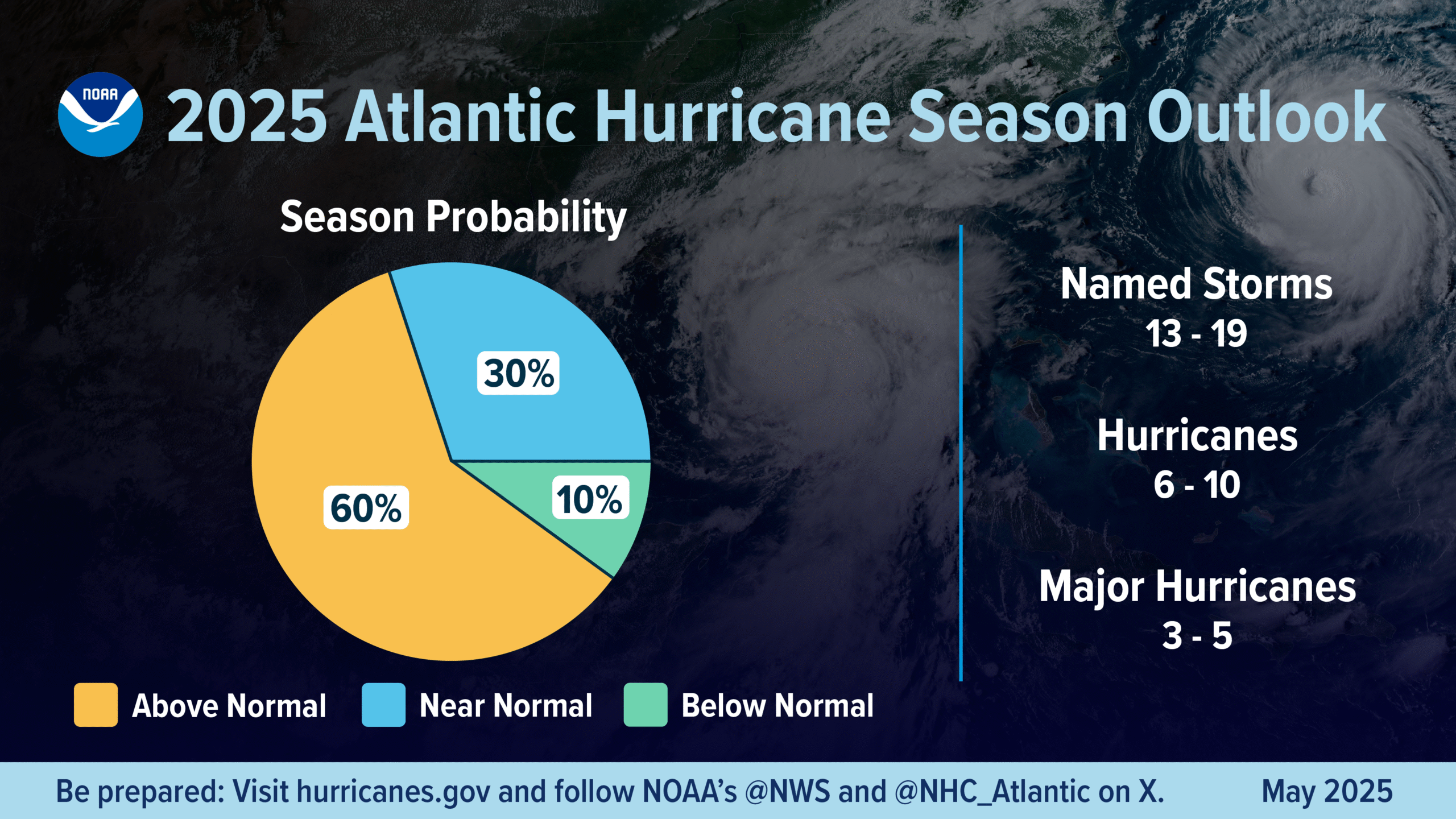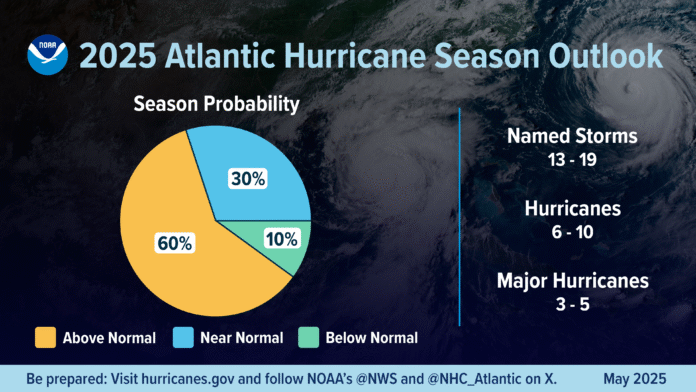On June 24th, Tropical Storm Andrea, the first named storm of the Atlantic hurricane season, was identified forming in the far northeastern Atlantic Ocean. According to the National Hurricane Center (NHC), Andrea poses no threat to the continental United States or the Caribbean. As the storm moves further away from land, it is forecast to dissipate over open waters.
Tropical Storm Andrea recorded maximum sustained winds of 40 miles per hour (65 kilometers per hour). Its initial location was approximately 1,110 miles (1,785 kilometers) west of the Azores. The cyclone was moving northeast at 20 miles per hour (31 kilometers per hour). The NHC did not issue any warnings, as no hazards were expected to affect nearby countries in the Caribbean or North America.
According to the NHC, this type of unusual storm formation in the central Atlantic is becoming more common due to increasingly warmer ocean temperatures each year. As a result, forecasters expect yet another unusually active hurricane season in 2025 for the Atlantic and Caribbean regions. However, it is not expected to be as intense as the 2024 season. Last year’s season was the third costliest on record, with major storms such as Beryl, Helene, and Milton.
In Belize, the National Emergency Management Organization (NEMO) is actively preparing for the season. During the week of June 18th, NEMO conducted vital training sessions in shelter management and damage assessment for public officers. According to NEMO reports, over 100 public officers from various government ministries gathered at the Belize City office and at NEMO’s headquarters in Belmopan to equip themselves with the knowledge and skills needed to manage emergency shelters and assess damage following a disaster effectively.

The sessions were led by Training Officer Renice Gillett. “The training is a fundamental part of NEMO’s preparation, as we continue to provide the best training possible to public officers, who form the backbone of all emergency response,” she said. NEMO emphasized that these activities aim to better prepare public service personnel for emergency situations such as hurricanes.
Meanwhile, the National Oceanic and Atmospheric Administration (NOAA) predicts 13 to 19 named storms this season, with six to 10 expected to become hurricanes. Of those, three to five may reach major hurricane strength, producing winds exceeding 110 miles per hour (177 kilometers per hour).
Over in the Pacific Ocean, the hurricane season is also underway, with several named storms already recorded. Among them is Hurricane Erick, which made landfall in southern Mexico.


